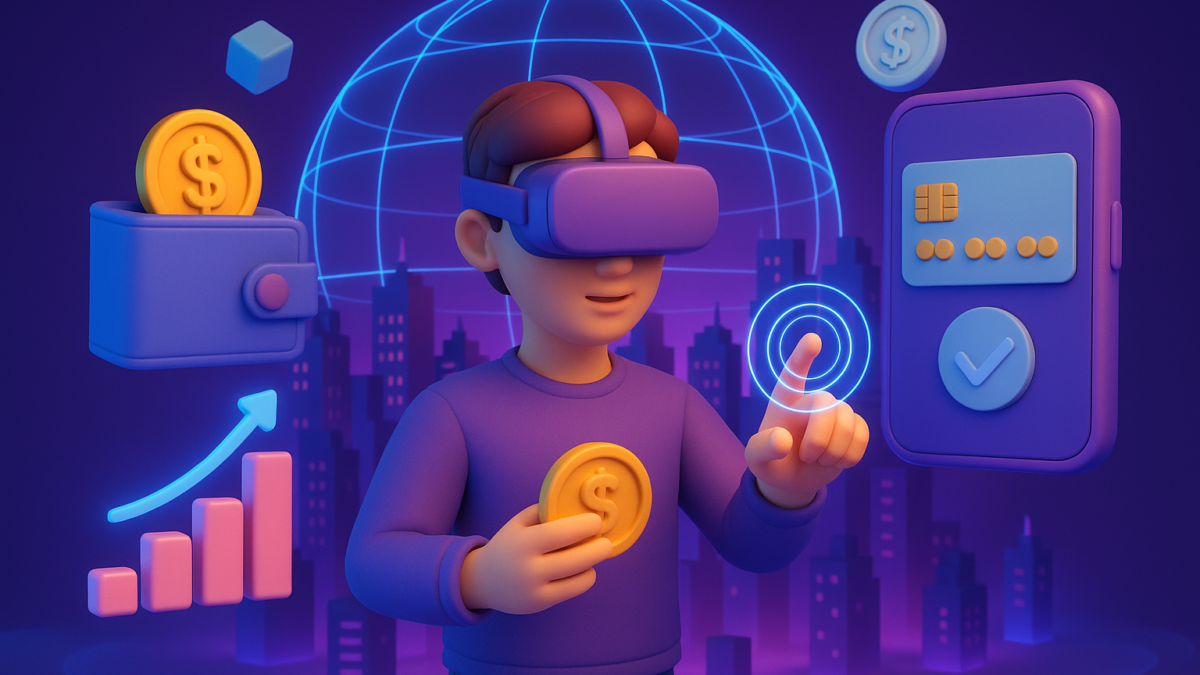FinTech Meets the Metaverse: How Virtual Worlds Will Change Payments
Table of Contents
The metaverse is no longer a sci-fi buzzword—it’s fast becoming a digital economy where people work, shop, and socialize. At the same time, FinTech innovation is reshaping how we pay, transfer, and invest money. When these two powerful forces converge, the future of payments takes on a whole new dimension.
So, how will FinTech and the metaverse together transform the way we handle transactions? From virtual debit cards to blockchain-based wallets, the payment ecosystem inside digital worlds is evolving rapidly.
The Rise of the Metaverse Economy
According to McKinsey, the metaverse economy could be worth $5 trillion by 2030. People are already spending real money on:
- Virtual real estate.
- Digital fashion and avatars.
- Online concerts and events.
- Metaverse-based gaming experiences.
But as this economy grows, traditional banking tools fall short. That’s where FinTech enters the picture—building infrastructure that supports seamless, secure, and instant payments across both real and virtual worlds.
Key Payment Innovations in the Metaverse
1. Digital Wallets for Virtual Worlds
Just as we use wallets like PayPal or Apple Pay in the real world, metaverse platforms rely on crypto wallets and FinTech apps for transactions. These wallets support fiat, cryptocurrencies, and even NFT-based assets, creating a unified financial hub.
2. Blockchain-Powered Transactions
Blockchain ensures trustless, transparent, and secure payments, which are essential in decentralized virtual spaces. Stablecoins (like USDC) are gaining popularity for metaverse commerce due to their lower volatility compared to cryptocurrencies like Bitcoin or Ethereum.
3. Virtual Debit and Credit Cards
Neobanks and FinTech startups are already experimenting with virtual debit cards that can be used inside metaverse platforms. These cards link real-world bank accounts to digital avatars, enabling seamless spending.
4. Cross-Border Payments Without Borders
The metaverse has no national boundaries, which means cross-border payments must be instant and low-cost. FinTech companies leveraging blockchain are eliminating high fees and long settlement times, making global virtual trade frictionless.
5. AI-Powered Fraud Detection
With the growth of metaverse transactions comes new fraud risks. FinTech firms are deploying AI-driven fraud monitoring tools that detect unusual behavior in real-time, protecting both buyers and sellers.
Benefits of FinTech in the Metaverse
- Accessibility: Users without traditional bank accounts can participate using digital wallets.
- Speed: Instant blockchain transactions replace slow traditional banking systems.
- Transparency: Every transaction is recorded on a decentralized ledger.
- Flexibility: Payments can be made in multiple currencies—fiat, crypto, or digital tokens.
- New Business Models: Virtual subscriptions, microtransactions, and NFT ownership create fresh revenue streams.
Challenges That Lie Ahead
While exciting, the fusion of FinTech and the metaverse isn’t without hurdles:
- Regulation Uncertainty: Governments are still figuring out how to regulate metaverse transactions.
- Security Risks: Hacks of crypto wallets and exchanges remain a concern.
- User Education: Not all consumers understand crypto wallets or token-based payments.
- Interoperability: Different metaverse platforms often run on different financial rails, limiting seamless transactions.
The Future of Payments in Virtual Worlds
By 2030, we may see:
- Universal Metaverse IDs linked to financial wallets for easy authentication.
- Tokenized Assets & NFTs being used as collateral for loans or investments.
- Embedded Finance Everywhere—from in-game lending to avatar-based credit scores.
- Full Integration with Real-World Finance, where buying a house in the metaverse mirrors real-world mortgages.
The bottom line? The metaverse economy will thrive only with FinTech innovation driving fast, secure, and inclusive payment systems.
Conclusion
The convergence of FinTech and the metaverse is rewriting the rules of digital payments. From blockchain wallets to AI-powered fraud prevention, the financial backbone of virtual worlds is being built today. For consumers, this means greater flexibility; for businesses, new revenue streams; and for FinTech companies, an entirely new frontier of growth.
As the line between physical and digital economies continues to blur, one thing is clear: FinTech will be the engine powering the metaverse’s trillion-dollar economy.
Ready to turn your content into a lead-generation machine? Explore our B2B Content Syndication Services and reach decision-makers who matter most.





